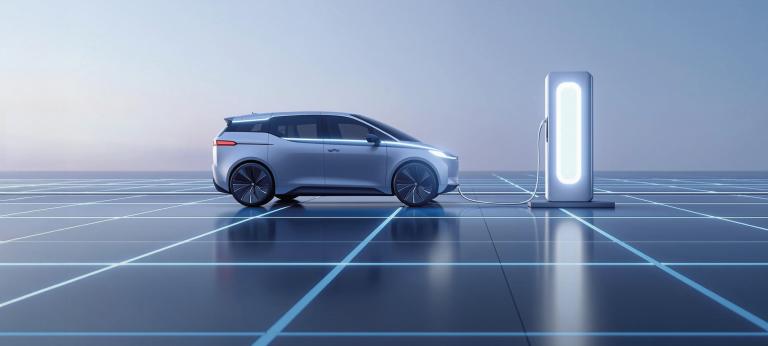EV Charging Index 2025: Steady progress
Despite tough market conditions, global EV use and charging infrastructure showed continued steady growth in 2024. Learn more in Roland Berger’s latest EV Charging Index.


Spain has edged its way up our Index and now ranks 22nd of 33 nations. Sales of new EVs stagnated in 2024, but the second-hand market is booming, suggesting the market is maturing. Resolving administrative bottlenecks, ensuring regulatory clarity and accelerating grid investments will be pivotal to unlocking a more larger-scale e-mobility ecosystem.

The Spanish EV market continued to expand in 2024, though growth patterns shifted. After a big jump in EV sales volume in 2023, there was no growth in this metric during 2024. The EV sales penetration rate also held steady at 12%, which is half the global and European averages for our study.
However, the consumer appetite for electrification seems strong, with the second-hand market booming. Resales for battery electric vehicles (BEVs) grew by around 47%, while resales for plug-in hybrids (PHEVs) grew by approximately 75%, according to the AEDIVE annual report. This dynamic reflects affordability issues in the new vehicle market but also confirms that demand is broadening beyond early adopters as more used vehicles become available.
"Companies that can deliver ultra-fast charging, reliable uptime and easy ad hoc payment options will be well positioned for growth."
Spain closed 2024 with 33% more public charging points than in the previous year – just under the European average growth rate of 35% and level with the average global growth rate. The country’s ratio of EVs to public charging points is now 10:1, ahead of the European average of 14:1.
Just over a third (35%) of Spain’s public charging points are faster DC chargers (>50 kW) – double the European average of 17%. And the pace of expansion in this area seems to be accelerating: Q4 2024 saw double-digit growth in the number of fast and ultra-fast charging points according to the AEDIVE annual report, marking a shift from basic availability toward robust, high-capacity infrastructure.
However, despite the fact that Spain's public charging infrastructure appears to be in good shape, its EV users aren’t so convinced.
When asked about public charging speeds, only 45% of respondents felt they were “generally fast enough.” This is some way below the European and global averages of 60% for this metric. And while the European average here has risen considerably since our previous Index, Spanish sentiment has remained unchanged.
A look at the responses for the overall charging experience highlights a similar concern, with 50% of EV users saying charge times are too long. Meanwhile, 53% find public charging infrastructure insufficient, which is some way above the European average of 43% for this metric.
Spain’s EV charging market entered a new phase of maturity in 2024, driven by obligations in the EU’s Alternative Fuels Infrastructure Regulation (AFIR), the relaunch of Spain's national subsidy schemes (MOVES) and a growing EV parc.
Against this backdrop, competitive intensity has shifted from early rollout to scale, integration and differentiation. Players with strong capital access, such as major companies, utilities firms and specialized high-power charging (HPC) operators, have moved decisively to secure network positions, consolidate fragmented capacity and enhance value propositions through bundled energy solutions.
The year’s developments highlight the emergence of two distinct competitive archetypes: integrated energy champions leveraging balance-sheet strength and renewable assets, and agile challengers focused on customer experience and ultra-fast corridor charging.
During 2024, five competitive moves stood out:
At the same time, persistent operational and systemic obstacles remain in infrastructure expansion. Administrative delays around permitting and grid access for new installations can stretch to 15 months or more, significantly slowing rollout. The scale and quality of the charging network remain a work in progress and are the clearest value-creation levers for operators.
What’s more, interoperability is limited, with only an estimated 9% of charging points supporting card payments, according to the Payment Innovation Hub and Afi, highlighting friction for users and potentially limiting adoption. Lastly, regulatory and grid clarity gaps persist, and business models are constrained by low utilization, raising questions on infrastructure returns.
We see numerous strategic opportunities for businesses in or looking to enter the charging market. These include:
Companies that can deliver ultra-fast charging, reliable uptime and easy ad hoc payment options will be well positioned for growth. They can also leverage Spain’s MOVES programs running from 2025 to 2027, including the latest MOVES Corredores initiative and the new AFIR corridor requirements. Together, these factors create a strong opportunity as Spain’s public charging network expands beyond 46,000 charging points and shifts toward higher-power, more reliable infrastructure.
Register now to to discover the latest insights, emerging trends and upcoming challenges in the EV and EV charging markets.